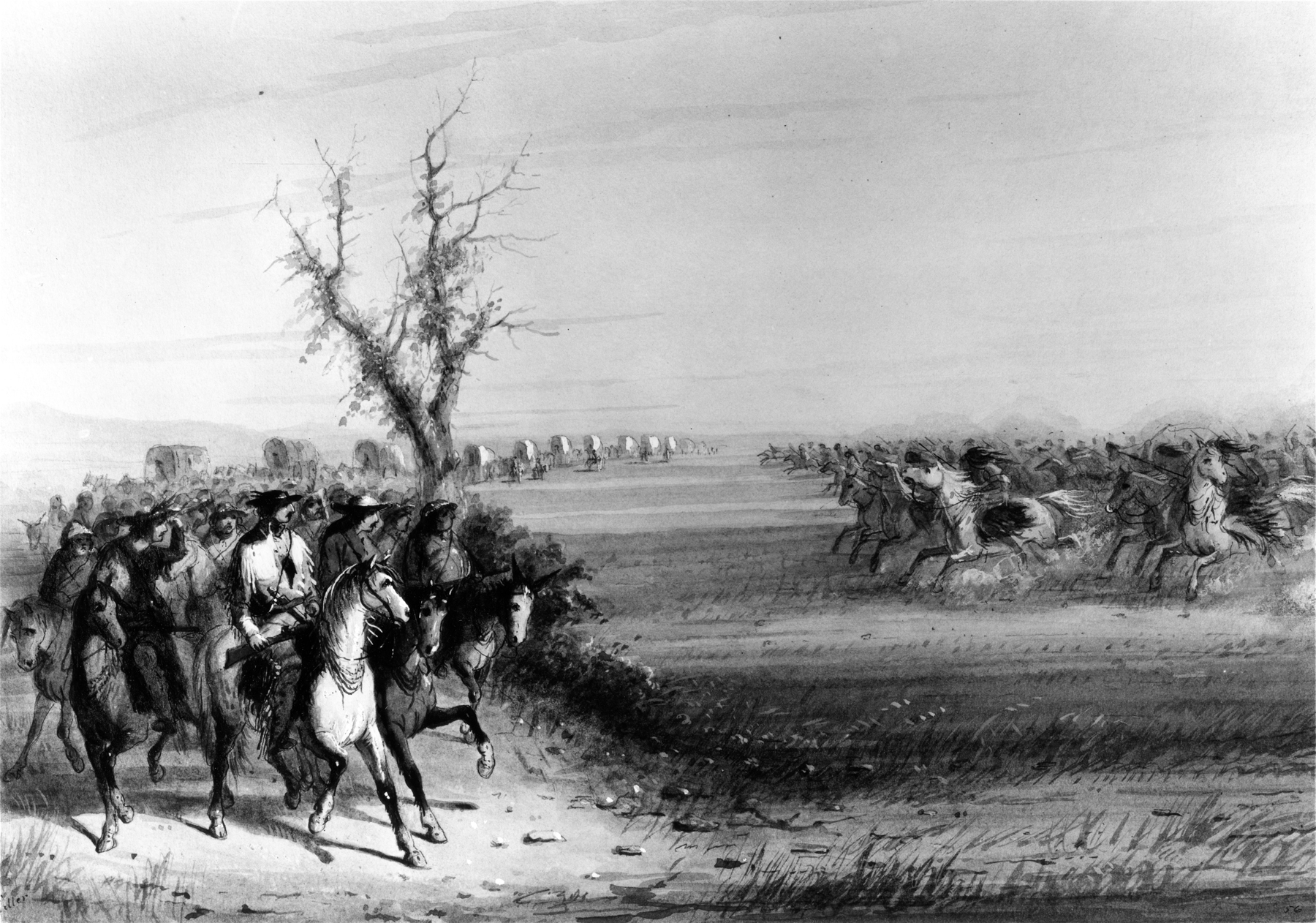Threatened Attack- Approach of a Large Body of Indians
(18th and 19th Centuries )
Extracts from Alfred Jacob Miller’s original text, which accompanied his images of Native Americans, are included below for reference. These words, which shaped how Miller’s contemporaries viewed the watercolors, reveal the racism and sexism embedded in 19th-century exploration and colonization of the western part of what is today the United States.
While leaving camp, Miller and his caravan were met by a group of Indians coming at full gallop towards them. Frightened, they were not sure what to do. When approached, Miller describes the action, "We stopped the camp and held a parley. Their argument was capital. They were on their own grounds, and we were 'interlopers' - winding up with a demand for black-mail on the instant. The great point was to get the chiefs and leaders to smoking as soon as possible, so as to gain diplomatic time. The famous maxim of Larochefoncault [La Rochefoucauld] will apply to the Indians with truth, however we may object to it in civilized life;- 'In the misfortunes of our friends, we always find something not displeasing to us.' At last we got the chiefs seated in the council circle, and the pip circulating, each taking a few whiffs. The first two with much ceremony, and muttering to the sun for the Great Spirit, and the next to the earth." A.J. Miller, extracted from "The West of Alfred Jacob Miller" (1837).
In July 1858 William T. Walters commissioned 200 watercolors at twelve dollars apiece from Baltimore born artist Alfred Jacob Miller. These paintings were each accompanied by a descriptive text, and were delivered in installments over the next twenty-one months and ultimately were bound in three albums. Transcriptions of field-sketches drawn during the 1837 expedition that Miller had undertaken to the annual fur-trader's rendezvous in the Green River Valley (in what is now western Wyoming), these watercolors are a unique record of the closing years of the western fur trade.
Provenance
Provenance (from the French provenir, 'to come from/forth') is the chronology of the ownership, custody, or location of a historical object. Learn more about provenance at the Walters.
William T. Walters, Baltimore, 1858-1860, by commission; Henry Walters, Baltimore, 1894, by inheritance; Walters Art Museum, 1931, by bequest.
Conservation
| Date | Description | Narrative |
|---|---|---|
| 10/1/1991 | Treatment | mounted; re-housed |
Geographies
USA (Place of Origin)
Measurements
H: 9 3/4 x W: 14 1/4 in. (24.8 x 36.2 cm)
Credit Line
Commissioned by William T. Walters, 1858-1860
Location in Museum
Not on view
Accession Number
In libraries, galleries, museums, and archives, an accession number is a unique identifier assigned to each object in the collection.
In libraries, galleries, museums, and archives, an accession number is a unique identifier assigned to each object in the collection.
37.1940.76



